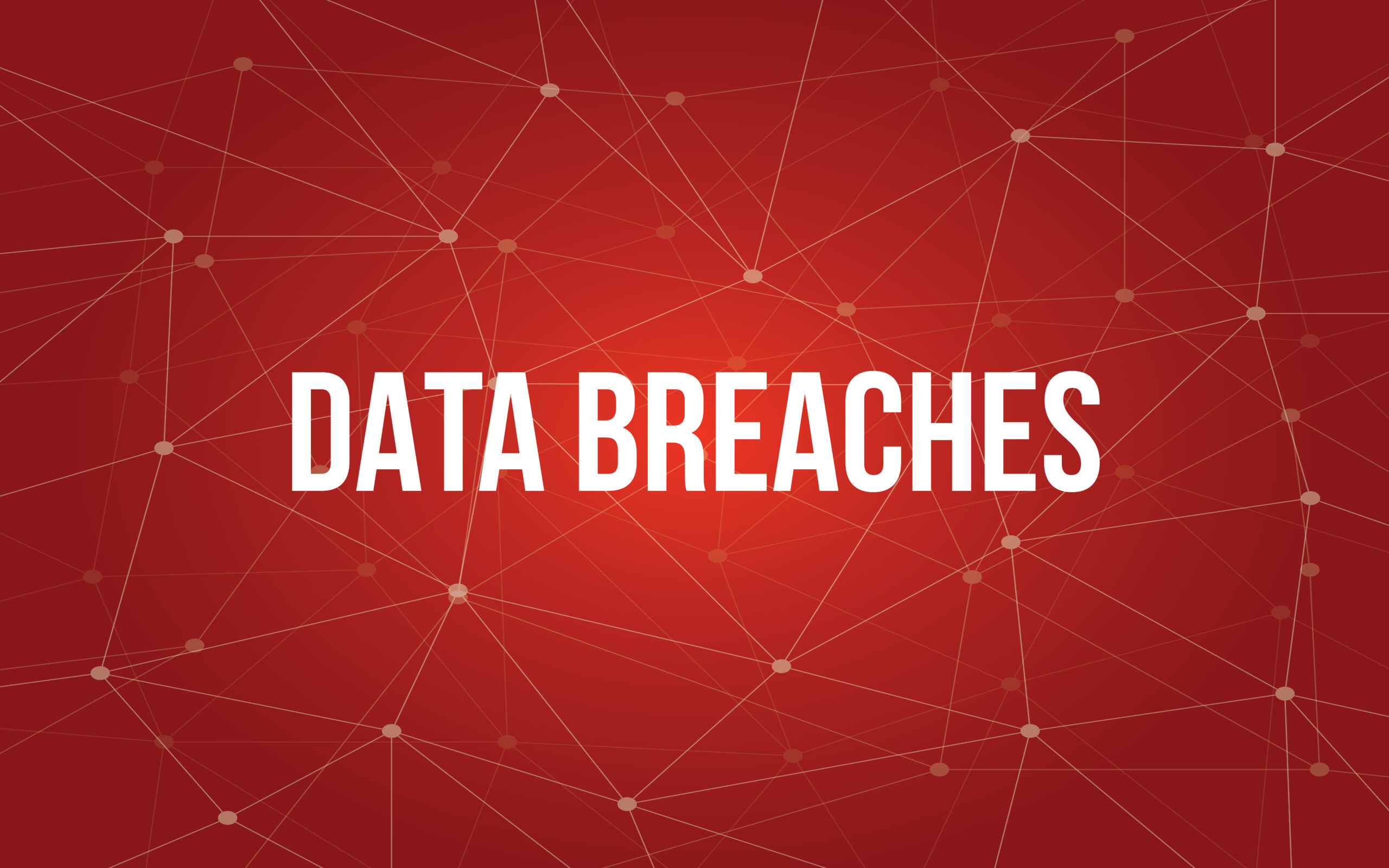Data breaches have become more sophisticated and prevalent. As security professionals, awareness of emerging trends in this space is critical to protect an organization’s data. Examine key developments like the use of AI in phishing campaigns and the targeting of IoT devices for DDoS attacks. Implement controls like multi-factor authentication, regular patching, and robust network monitoring to get ahead of these threats. A proactive security posture will enable a team to spot anomalies and stop attacks before they escalate into full-blown breaches. Understand where this field is headed to fortify defenses accordingly.
The Evolving Threat Landscape: Emerging Trends in Data Breaches

As the digital landscape continues to expand, so too does the risk of data breaches. Cybercriminals are constantly adapting their tactics, exploiting new vulnerabilities, and leveraging emerging technologies to breach systems and steal sensitive information.
Artificial Intelligence in Phishing Attacks
- One alarming trend is the use of artificial intelligence (AI) to enhance the sophistication of phishing attacks. AI-powered phishing campaigns can generate highly convincing emails and websites, making it increasingly difficult for users to distinguish them from legitimate communications.
- These advanced attacks can bypass traditional email filters and leverage social engineering techniques to trick even savvy individuals into divulging login credentials or other sensitive data.
Exploitation of IoT Devices
- The proliferation of Internet of Things (IoT) devices has also opened new avenues for cybercriminals. Many IoT devices lack robust security measures, making them vulnerable to hijacking and exploitation in distributed denial-of-service (DDoS) attacks.
- By compromising and commandeering vast networks of IoT devices, cybercriminals can launch crippling DDoS attacks against websites, servers, and other online resources, causing widespread disruption and financial losses.
Evolving Ransomware Tactics
- Ransomware, a type of malware that encrypts data and demands payment for its release, continues to be a significant threat. Cybercriminals are constantly refining their ransomware tactics, employing more sophisticated encryption algorithms, and leveraging new distribution methods. Furthermore, they are increasingly targeting larger organizations and critical infrastructure, where the potential for financial gain and disruption is greater, exacerbating the impact of these attacks.
- To mitigate these evolving threats, organizations must adopt a proactive and multi-layered approach to cybersecurity. This includes implementing robust access controls, such as multi-factor authentication, keeping software and systems up-to-date with the latest security patches, and deploying advanced threat detection and response solutions.
Additionally, ongoing employee training and awareness programs are crucial to educating individuals about the latest tactics employed by cybercriminals, empowering them to identify and report potential threats promptly.
AI-Powered Phishing Attacks: A Growing Sophistication
The Rise of AI in Cyberattacks
- You may have encountered phishing emails that appear alarmingly authentic, impersonating legitimate organizations and tricking recipients into divulging sensitive information. This threat is escalating as cybercriminals leverage Artificial Intelligence (AI) to craft highly sophisticated phishing campaigns.
- AI algorithms can analyze vast datasets, including writing styles, logos, and brand imagery, to create convincing email content and visuals. These AI-generated phishing emails can bypass traditional security filters, increasing the risk of successful attacks.
AI’s Role in Social Engineering
- Beyond crafting realistic emails, AI enables cybercriminals to study online behavior patterns and craft personalized social engineering tactics. By mining public data and social media profiles, AI can generate tailored phishing lures that exploit individuals’ interests, relationships, or professional roles.
- This level of customization significantly increases the chances of victims falling for the deception, as the messages appear highly relevant and trustworthy.
Mitigating AI-Powered Phishing Risks
To counter these advanced threats, organizations must adopt a multi-layered approach to phishing defense. This includes:
Implementing advanced email security solutions that leverage AI and machine learning to detect AI-generated phishing attempts.
Regularly training employees to recognize sophisticated social engineering tactics and report suspicious emails.
Enforcing strict access controls, multi-factor authentication, and data encryption to limit the potential impact of successful phishing attacks.
As AI continues to evolve, staying vigilant and adopting proactive security measures is crucial to mitigating the growing sophistication of AI-powered phishing campaigns.
The IoT Explosion: Unsecured Devices and DDoS Risks
The proliferation of Internet of Things (IoT) devices has brought unprecedented convenience to our lives. However, this rapid growth has also opened new avenues for cybercriminals to exploit unsecured devices and launch devastating distributed denial-of-service (DDoS) attacks.
Vulnerabilities in IoT Devices
- Many IoT devices are designed with minimal security measures, making them easy targets for hackers. Poor password practices, lack of encryption, and outdated software are common vulnerabilities that can be exploited. Once compromised, these devices can be recruited into botnets – vast networks of hijacked devices used to carry out DDoS attacks.
The DDoS Threat Landscape
- DDoS attacks aim to overwhelm systems, servers, or networks with an excessive amount of traffic, rendering them inaccessible to legitimate users. As the number of insecure IoT devices continues to grow, the potential for large-scale DDoS attacks increases exponentially. These attacks can cripple businesses, disrupt critical infrastructure, and cause significant financial losses.
Mitigating the Risks
- Addressing the IoT security challenge requires a multi-faceted approach. Manufacturers must prioritize security in the design and development of IoT devices, implementing robust encryption, secure firmware updates, and strong authentication mechanisms. Users should also exercise caution by changing default passwords, keeping software updated, and monitoring their devices for suspicious activity.
- Additionally, organizations should invest in advanced DDoS mitigation solutions that can detect and filter malicious traffic, ensuring the availability and resilience of their systems. Regular security assessments, employee training, and incident response planning are also crucial components of an effective cybersecurity strategy.
By addressing the vulnerabilities in IoT devices and implementing robust countermeasures, organizations can better protect themselves against the growing threat of DDoS attacks and maintain the integrity of their operations in an increasingly connected world.
Recommended Mitigation Strategies and Controls
In the face of evolving cyber threats, organizations must adopt a multi-layered approach to safeguard their data and systems. Here are some recommended mitigation strategies and controls:
Multi-Factor Authentication (MFA)
- Implementing MFA is a crucial step in fortifying access controls. It requires users to provide an additional form of verification, such as a one-time code or biometric data, in addition to their password. This extra layer of security significantly reduces the risk of unauthorized access, even if passwords are compromised.
Regular Software Updates
- Keeping software up-to-date is essential for addressing known vulnerabilities and closing potential entry points for attackers. Organizations should establish a robust patch management process to ensure the timely deployment of security updates across all systems and applications.
Robust Perimeter Controls
- Firewalls, intrusion prevention systems (IPS), and web application firewalls (WAF) are crucial components of a robust perimeter defense strategy. These controls help monitor and filter incoming and outgoing traffic, detecting and blocking malicious activities before they can cause harm.
Employee Awareness and Training
- Cybersecurity awareness programs are vital for educating employees on recognizing and responding to potential threats. Regular training sessions should cover topics such as phishing, social engineering, and safe online practices, empowering employees to become an active line of defense against cyber threats.
Incident Response and Recovery Plan
- Despite preventive measures, data breaches can still occur. Having a well-defined incident response and recovery plan is crucial for minimizing the impact and ensuring business continuity. This plan should outline clear roles, responsibilities, and procedures for detecting, containing, and recovering from security incidents.
Continuous Monitoring and Threat Intelligence
- Effective cybersecurity requires continuous monitoring of systems, networks, and user activities for anomalies or suspicious behavior. Leveraging threat intelligence services can provide organizations with up-to-date information on emerging threats, enabling them to proactively adapt their defenses.
By implementing these mitigation strategies and controls, organizations can significantly reduce their exposure to data breaches and enhance their overall cybersecurity posture. However, it’s essential to recognize that cybersecurity is an ongoing process that requires continuous evaluation and adaptation to stay ahead of evolving threats.
FAQs on Emerging Trends in Data Breaches and Mitigations
What are the top emerging threats?
- Some key emerging threats include the use of AI to enhance phishing attacks, exploitation of IoT devices in DDoS attacks, and an increase in supply chain attacks targeting third-party vendors. Cybercriminals are constantly evolving their tactics, so it’s critical to stay up-to-date on the latest threat vectors.
How can I protect against AI-powered phishing?
- AI is being leveraged to create extremely convincing phishing emails that can bypass traditional detection methods. Multi-factor authentication is essential, as is ongoing security awareness training to educate employees on spotting even the most sophisticated social engineering attempts.
What are IoT device threats and mitigations?
- The proliferation of IoT devices has significantly expanded the attack surface for hackers to potentially compromise and leverage in large-scale DDoS attacks. Rigorous device hardening, network segmentation, and behavioral analytics are key mitigations.
Are supply chain attacks a major concern?
- Supply chain attacks targeting vendors have skyrocketed, allowing threat actors to potentially access the systems of multiple clients. Thorough vendor risk assessments and continuous third-party monitoring are crucial defensive measures.
How can I stay ahead of emerging threats?
- Adopt a risk-based, intelligence-driven cybersecurity strategy focused on continuous monitoring, rapid incident response, and proactive hardening against evolving threats. Leverage the latest threat intelligence and collaborate closely with cybersecurity leaders in your industry.
In A Nutshell
You now have an overview of the emerging threats in the evolving landscape of data breaches, from the growing sophistication of AI-enhanced phishing attacks to the vulnerabilities introduced by IoT devices. By implementing strong authentication policies, keeping software updated, and maintaining robust perimeter controls, you can help mitigate these risks. Stay vigilant of new trends in cyberattacks and be proactive about strengthening your defenses. With knowledge and preparation, you can stay ahead of data breach threats.
More Stories
Gemini Takes the Initiative: AI That Actually Does Your Tasks
This innovative feature in Gemini allows you to set natural-language prompts to execute specific tasks at designated times.
CrowdStrike and Microsoft Unite to Harmonize Cyber Threat Attribution
CrowdStrike and Microsoft aim to harmonize the fragmented landscape of cyber threat attribution. Historically, varied naming conventions often muddled threat intelligence. This collaboration aims to standardize terminology.
Nomupay and SoftBank Forge Path to Seamless Cross-Border Payments in Asia
In today's world, seamless financial transactions are essential for global commerce. Nomupay and SoftBank are leading a major change in...
Mozilla Deploys AI-Driven Shield to Combat Crypto-Stealing Firefox Extensions
The deployment of an AI-driven shield from Mozilla leverages automated risk assessment to scan wallet-related add-ons for potential threats.
TikTok Empowers Users with AI-Driven Content Control Tools
TikTok is advancing digital content with AI-driven tools that give you more control over your viewing experience. On June 3,...
Nordic’s nRF9151 Powers Japan’s IoT Future with NTT DOCOMO LTE-M Certification
With the recent LTE-M certification of Nordic’s nRF9151 System-in-Package (SiP), witness a transformation in cellular IoT deployment across various industries.


